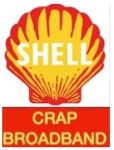 Andreas Schaefer, fuel scientist for Shell international. Picture: MARK SMYTH
Andreas Schaefer, fuel scientist for Shell international. Picture: MARK SMYTH
 Detergents mask fuel quality issues
Detergents mask fuel quality issues
Shell is launching its new V-Power with Dynaflex fuels and detergents around the world — but is it just marketing hype in SA, asks Mark Smyth
Shell put on a huge show for the launch of its new V-Power with Dynaflex fuels. And not just in SA, because it is rolling out the new fuels to 23 markets around the world this year.
The company brought in fuel retailers, the media, technology pundits and even petrol attendants from all over SA. It had giant screens, new fuel trucks, demonstration modules, food stalls and lots of leather chairs and couches. It even hired the Kyalami racetrack and its conference centre for the day.
Many will have been impressed — it was an impressive setup. But among all the attendees was a chap called Andreas Schaefer who is based at a Royal Dutch Shell laboratory in Hamburg and who is one of 170 scientists working for the company. Schaefer followed the script, telling everyone how brilliant the new fuel was, but then we sat down with him away from the razzmatazz.
We had to chip away at him a bit, but after asking the same question directly and in various ways: “Is SA getting the same fuel as Europe?” we eventually got the answer: “No”. We are getting the same additives (Shell does not like using that word, they prefer detergents), but the actual fuel will be the same lower quality fuel that the South African Petroleum Refinery churns out for Shell and its other clients. Essentially, Shell spent millions announcing that it is launching the same old fuel but with more Sunlight.
But wait, surely more detergent makes the engine cleaner and more efficient? Yes it does and that is a good thing, but it would have less to clean if the quality of the basic fuel was better, wouldn’t it?
The new fuel will be available in August in both petrol and diesel for cars, light commercial vehicles and even trucks and buses. The presentation declared it is even suitable for Euro 5 and 6 engines, but these engines are few and far between in SA because they have to be adapted for our fuel quality.
So what does the new fuel do? Well, it is named Dynaflex, which is basically the name given to the detergents. Shell is claiming improvements in terms of fuel consumption and emissions, but again Schaefer admitted that the tests were conducted in Europe using cleaner fuels than we have. He said the company tries to avoid any specific claims when it comes to consumption improvements because of the variation in fuel quality around the world compared to that in the tests.
Schaefer did point out, though, that the company had to do something to stand out from competitors which have caught up with the company in recent years when it comes to fuel technology. The new fuel contains twice as many cleaning molecules as Shell’s regular unleaded 95 fuel. One of its main attributes is to improve the efficiency of the internal combustion engine, which generally only operates at 30% efficiency. Friction accounts for about 15% of the loss of efficiency in an engine and so including detergents to clean the engine should help to improve this.
It is likely that the new fuel with its Dynaflex technology will make engines cleaner and run better, but the issue of improving our poor fuel quality remains one that needs to be addressed. The new diesel fuel still has a sulphur content of 50ppm and with yet more changes being demanded by the fuel companies to the continuously delayed Cleaner Fuels 2 regulations in SA, it is unclear just when there will be something to really put on a big show about.
RELATED ARTICLE

 EBOOK TITLE: “SIR HENRI DETERDING AND THE NAZI HISTORY OF ROYAL DUTCH SHELL” – AVAILABLE ON AMAZON
EBOOK TITLE: “SIR HENRI DETERDING AND THE NAZI HISTORY OF ROYAL DUTCH SHELL” – AVAILABLE ON AMAZON EBOOK TITLE: “JOHN DONOVAN, SHELL’S NIGHTMARE: MY EPIC FEUD WITH THE UNSCRUPULOUS OIL GIANT ROYAL DUTCH SHELL” – AVAILABLE ON AMAZON.
EBOOK TITLE: “JOHN DONOVAN, SHELL’S NIGHTMARE: MY EPIC FEUD WITH THE UNSCRUPULOUS OIL GIANT ROYAL DUTCH SHELL” – AVAILABLE ON AMAZON. EBOOK TITLE: “TOXIC FACTS ABOUT SHELL REMOVED FROM WIKIPEDIA: HOW SHELL BECAME THE MOST HATED BRAND IN THE WORLD” – AVAILABLE ON AMAZON.
EBOOK TITLE: “TOXIC FACTS ABOUT SHELL REMOVED FROM WIKIPEDIA: HOW SHELL BECAME THE MOST HATED BRAND IN THE WORLD” – AVAILABLE ON AMAZON.





















